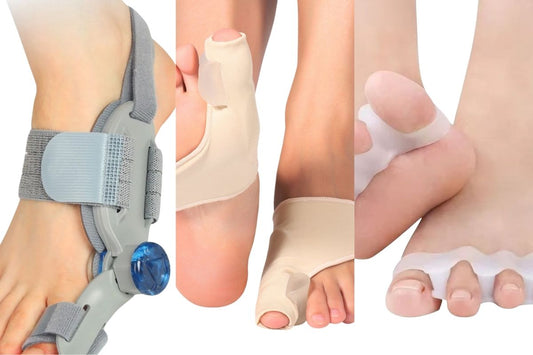Understanding the Causes and What You Can Do About It
Elbow pain that feels sharper or more pronounced first thing in the morning is a common issue — and often a confusing one. Many people go to bed feeling fine, only to wake up with stiffness, soreness, or a dull ache around the elbow joint. So what’s behind this pattern?
This guide will explore the most likely reasons your elbow hurts more in the morning, how common conditions like tennis elbow can contribute, and what you can do to relieve the discomfort — from improving your sleep posture to using supportive tools like braces.
Common Causes of Morning Elbow Pain
There’s no single explanation for why your elbow feels worse after a night’s rest. Instead, it's often the result of underlying inflammation combined with how you sleep or previous strain from daily activities.
1. Overuse from the Day Before
Elbow pain can be the result of repetitive strain that builds up during the day — from typing, lifting, playing sports, or even gripping objects too tightly. These activities can irritate the tendons and muscles around the elbow, leading to inflammation that becomes more noticeable after hours of immobility overnight.
2. Sleep Position and Joint Compression
The way you position your arm while you sleep can make a big difference. Curling your arm under your pillow or sleeping with your elbow bent at a sharp angle can compress nerves or tendons, restricting blood flow and causing increased stiffness by morning.
3. Inflammatory Tendon Conditions
Conditions like lateral epicondylitis (tennis elbow) or medial epicondylitis (golfer’s elbow) can flare up after rest periods. When joints are not moved for long stretches, inflammatory chemicals can accumulate, and the tendons stiffen. This leads to that familiar “first-movement pain” when you try to use the joint in the morning.
4. Early Signs of Arthritis
In some cases, early-morning elbow pain could be a sign of joint degeneration or rheumatoid arthritis. Morning stiffness that lasts longer than 30 minutes is a classic symptom of inflammatory arthritis. However, elbow arthritis is relatively uncommon unless you have a pre-existing diagnosis.
How Tennis Elbow Contributes to Morning Pain
Tennis elbow, or lateral epicondylitis, is one of the most common causes of elbow pain — and it often feels worse after rest.
This condition involves microtears in the tendons that attach to the outside of your elbow. These microtears cause inflammation and pain, especially after repetitive wrist or arm movements (typing, carrying, racket sports). When the joint is immobilized during sleep, the inflamed area becomes stiffer, making morning movements feel sharp or uncomfortable.
Tennis elbow pain is typically felt:
- On the outside of the elbow
- When gripping or lifting objects
- When extending your wrist or arm
If this sounds familiar, your morning pain may be a signal of an underlying overuse condition that hasn’t been addressed yet.
What You Can Do to Reduce Morning Elbow Pain
If you regularly wake up with elbow discomfort, a few targeted adjustments can help manage — or even prevent — the issue.
1. Adjust Your Sleep Position
Try sleeping with your arm in a neutral, straight position, resting by your side instead of under your head. Avoid bending the elbow tightly or tucking it under your body. If needed, use a body pillow to help maintain a comfortable position throughout the night.
2. Use an Elbow Brace for Support
Wearing a counterforce bands or elbow braces overnight can help reduce strain on the tendons. These braces keep the forearm muscles slightly compressed and the elbow joint stabilized, which may reduce morning stiffness or sudden flare-ups.
A well-fitted brace is especially helpful if:
- You’ve been diagnosed with tennis elbow
- You feel pain during or after repetitive arm activity
- You want to prevent further overuse during sleep
3. Try Gentle Morning Stretches
When you wake up, give your elbow and forearm a chance to warm up. Try:
- Wrist extension stretch: Arm straight in front, palm down, gently pull fingers back with opposite hand.
- Wrist flexion stretch: Arm straight, palm up, gently pull fingers downward.
- Forearm rotation: Rotate your palm up and down slowly.
These simple movements improve circulation and help loosen up tight tendons.
4. Apply Heat or Cold
- Use a warm compress in the morning to improve blood flow and loosen stiff muscles.
- Use a cold pack at night if you had a strenuous day to reduce inflammation.
Alternating hot and cold based on your symptom pattern can provide noticeable relief.
5. Reduce Daytime Overuse
If your daily activities involve lots of typing, gripping, or lifting, consider using ergonomic tools or taking regular breaks. Prevention during the day is key to avoiding nighttime inflammation.
When to See a Professional
If your elbow pain:
- Persists beyond a few weeks
- Interferes with your daily activities
- Gets worse over time
- Comes with tingling, numbness, or swelling
…it’s best to consult a healthcare provider or physiotherapist. They can evaluate for conditions like nerve entrapment, arthritis, or tendon tears — and guide you on appropriate treatment plans.
Final Thoughts
Waking up with elbow pain can be frustrating, but it’s often manageable with a few small changes to your routine. Understanding what’s behind your symptoms — from repetitive strain to sleep posture — is the first step toward lasting relief.
By being mindful of your daily habits, using supportive tools like a tennis elbow brace, and staying ahead of early symptoms, you can start your day feeling stronger and more in control.
As always, if the pain persists or worsens, don’t delay speaking with a medical professional for a personalized assessment.




